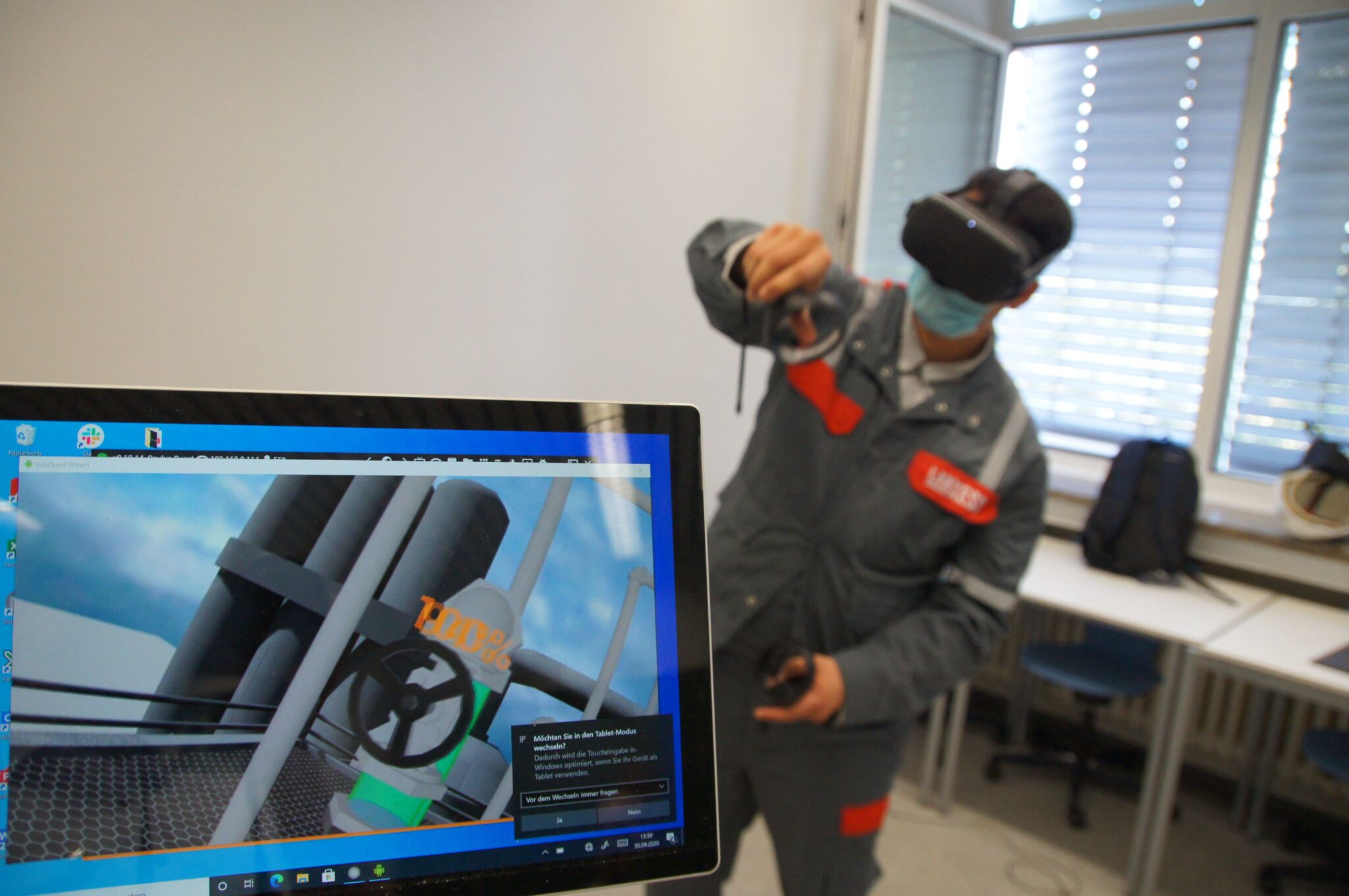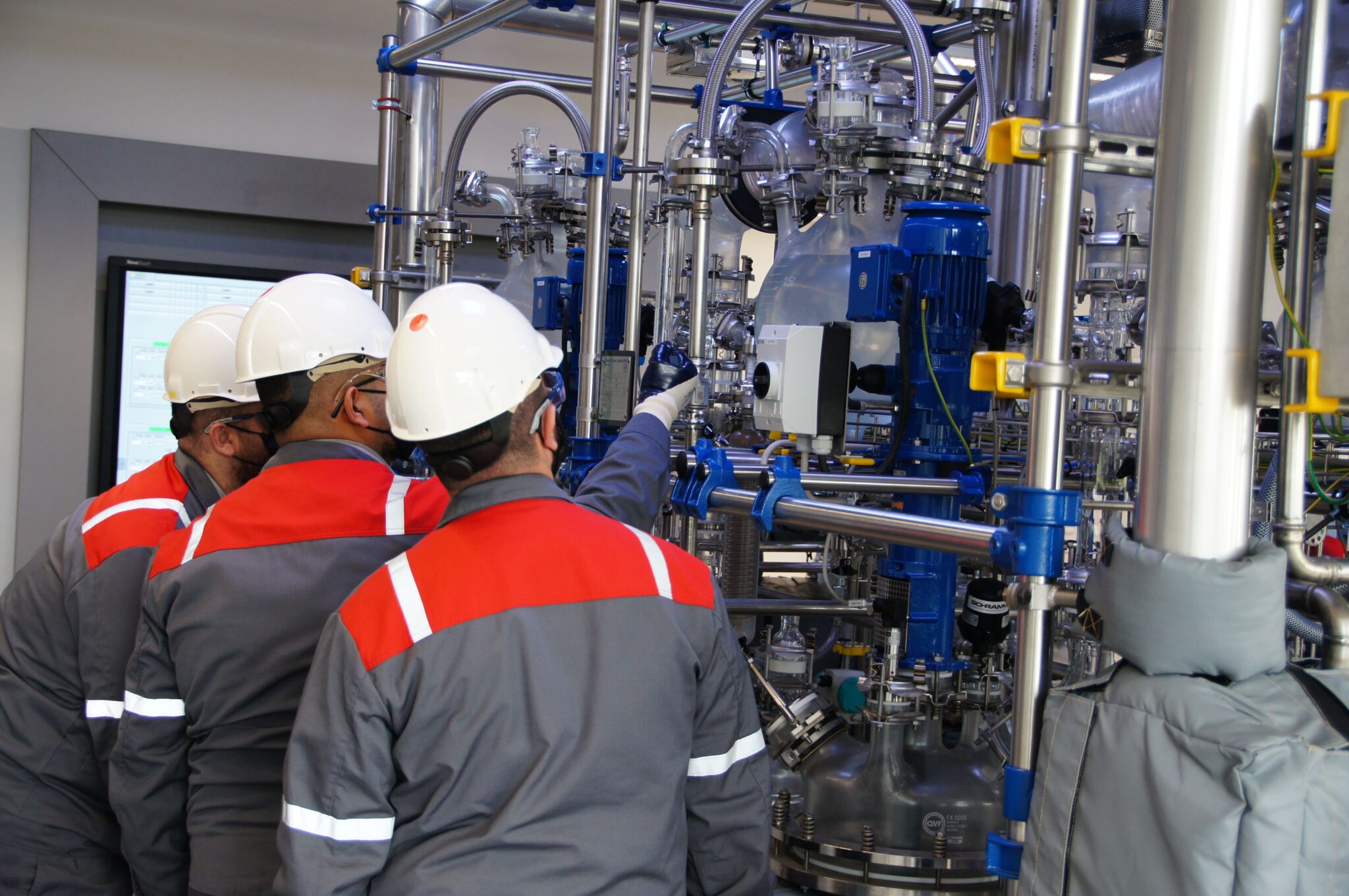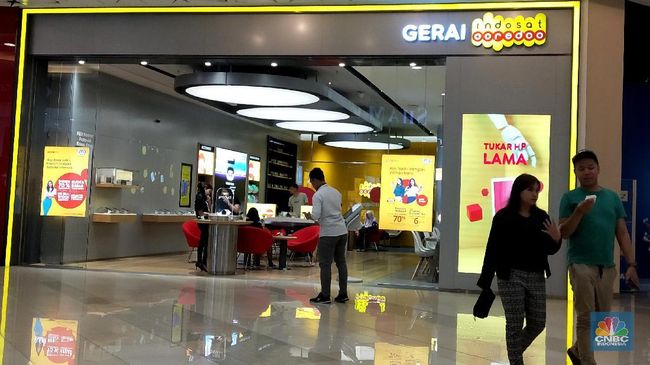Boris Kantzow is the founder and CEO of Weltenmacher GmbH. The company specializes in VR technology in education. In the interview we talk to Boris about his passion for VR and the advantages VR offers for professional training. It’s about motivation to learn, target groups and concrete impulses for everyone who wants to get into the topic of VR.
Boris, you are Co-Founder and Managing Director at Weltenmacher and founded the company in 2017 together with your business partner Jonathan Natzel. What was your motivation?
Boris: The VR technology creates completely new possibilities because we are suddenly an active part of a three-dimensional simulation. When I wore VR glasses for the first time, it was clear to me: this technology will change the world again. But technology is just a tool. And “Education is the most important investment in people” – a quote from Franz Cornelsen, and I couldn’t put it better. Using new technology to improve education is great. And with VR we are able to continuously optimize learning content and make it available to a large number of users.
Right from the start you have concentrated on topics related to training and further education. Which VR applications have you already developed? What experiences do you have?
Boris: We started the first chemical VR application in 2017. Furthermore, we have implemented various VR training modules with different partners: first aid, operation of ventilation or dialysis machines, fire protection, protective measures when working at heights, replacement of gas / heating boilers (with a strong gamification component – in a spaceship), education for heart operations and dialysis procedures, virtual training courses with several participants, etc. – So numerous applications with very different target groups (from teenagers to 80+ years) and very different learning goals. We have now gained a lot of experience and each new application pays off for our new training.
Together with Currenta and Cornelsen eCademy, you developed the VR content for the chemical technician. How did this cooperation come about?
Boris: The constellation was perfect: Currenta has the technical expertise, Cornelsen eCademy has the didactic and world-maker as a startup the technological for the special requirements that VR brings with it.
Together we were able to define the learning goals and precisely coordinate the interfaces between theory, VR and practice. Working out this in this pilot project meant a complex, interdisciplinary and iterative procedure for everyone involved, but the initial feedback from the trainees speaks for itself. We learned a lot in this way and we created a good blended learning framework. We can further optimize this in the future and also use it for other scenarios.
The VR simulation / task “Filling, heating and emptying a stirred tank” was developed for the chemical technician. Why?
Boris: It is important that we do not “train monkeys” to imitate a certain process on a certain system, but rather to create a basic understanding and to transfer what we have theoretically learned to a real system. The stirred tank was selected by the trainers from various Currenta training centers in a workshop because it forms the basis for numerous experiments. Thus the basics can be learned particularly well here. This is also important because the modules created in this context can also be used in other chemical companies.
What exactly can the apprentice do and learn in the VR?
Boris: As in the real system, the trainees can move around and interact with almost all parts. You can also look into pipes or into the stirred tank, into pumps, etc. In reality, this is not possible, where the trainees are often faced with a “black box”. In VR there is the possibility of repeating sections of a process as often as you like at your own pace, making mistakes or accelerating sections, for example when heating in VR. This enables us to address learning objectives very precisely.
What did you pay particular attention to when developing this VR simulation?
Boris: It’s obvious that you learn better when you have fun doing it. In addition to the clear definition of the learning goals, it was important to us that the apprentices are also motivated by our avatar, who also has a cheekier saying ready. In addition, we use gamification elements at some points to further loosen up the training. All of this, of course, only where it makes sense – of course, the focus is on learning and the didactic concept.
What advantages do you see as a VR expert in the combination of classic learning units and VR?
Boris: VR offers enormous advantages in learning, but many learning goals can be better achieved through other media such as e-learning, texts or videos, while others undoubtedly have to be learned on the real system. Therefore, all learning content has to be scrutinized in order to decide which medium is most suitable and where. The combination and precise coordination of the content and media results in a very efficient learning experience.
How do training companies benefit from using VR?
Boris: In contrast to a real system, the virtual learning environment can be replicated as required using a larger number of VR glasses. The time on the real system is reduced, so more trainees can be trained with existing resources. The trainees can learn the basics in VR independently and in a standardized way, which takes the burden off the trainers and gives them the opportunity to better deal with the individual differences of each individual. We also get feedback that the use of VR is very popular with the younger generation and thus helps with the recruiting of workers and trainees.

I am an instructor and want to start with VR. What equipment, VR glasses, etc. do I need and what does it cost me?
Boris: VR technology has developed rapidly over the past 5 years, and now there are consumer “standalone” VR glasses with an integrated processor and graphics chip for € 300. The handling must be understood at first, but this is not rocket science, and most of the young trainees have great fun with this technology. The exact selection of the technology with the corresponding backend for updates etc. may then have to be adjusted somewhat depending on the training situation.
Are your VR applications self-explanatory or do the trainees need a detailed introduction?
Burkhardt: Our aim is to make the VR trainings as self-explanatory as possible, so the trainees can independently gather and learn virtual practical experience at their own pace in various didactic modes. Our intelligent avatar can sort out the behavior and errors of the user and adaptively provide content. In future, this should also happen across the board in combination with the e-learning content of the eCademy, but that will not be entirely trivial.
What are the next steps in terms of VR content with Weltenmacher and eCademy? Are further projects planned?
Boris: We would like to implement further experiments and content with this blended learning concept. We also want to make our content even better and coordinate it even better. To do this, we now have to collect feedback from trainees and trainers. Furthermore, our goal is to learn this way of using it in other areas beyond chemistry! We learned a lot, the concept is accordingly in place and can now be easily transferred to other learning environments.
What trends do you see in the future? What would you wish for in VR?
Boris: The VR trainings already offer enormous added value, but it is still a young technology. The further developments of our software and the underlying didactics, including with greater involvement of artificial intelligence, will change and drive this way of learning extremely in the coming months and years. Today it’s still something extraordinary, but it won’t be long and it will be perfectly normal to learn in all kinds of areas in VR. Everything else doesn’t make any sense.
Those:
Photo: New VR application for the chemical technician. (Source: eCademy)
“Using new technology to improve education is great” was last modified: November 1st, 2020 by
–


